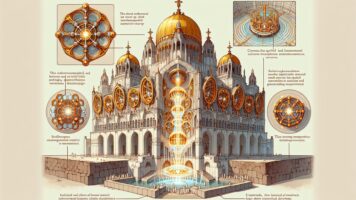This text presents a controversial theory about the true purpose of many large, ornate buildings commonly thought to be churches. Here are the key points:
Hidden History of “Church” Buildings
The author claims these structures were never actually churches, but part of an advanced ancient civilization. They suggest:
• 🏛️ These buildings cannot be replicated with modern technology
• 🔍 Many have “founded” inscribed rather than “built,” implying discovery not construction
• 🏦 They’ve been repurposed as banks, universities, and government buildings
True Purpose of the Buildings
According to the theory, these structures were originally:
• 🧘 Meditation amplification centers
• 🌈 Healing facilities
• 🔊 Frequency generators for manifestation
Key features mentioned:
• 🪟 Stained glass windows and geometric shapes amplified frequencies
• 🛡️ Created protective force fields
• 🎵 Architecture described as “frozen music”

Religious Symbols Reinterpreted
The theory extends to religious symbols:
• ✝️ Crosses, crescents, and stars were actually antennas
• 🔋 These symbols were designed to draw energy into the buildings
• 🤔 The author suggests people have been misled about their true meaning
Claims of Ancient Civilizations
• 🏙️ References to Atlantis and Tartaria as real ancient empires
• 💥 Implies a catastrophic event or invasion ended this advanced civilization
While these claims are not supported by mainstream historical or archaeological evidence, they reflect popular conspiracy theories and alternative historical narratives.
Additional Facts About Ancient Architecture
• 🏛️ Many ancient structures, like the Pantheon in Rome, do feature advanced architectural techniques that still impress engineers today
• 🧪 Some ancient building materials, like Roman concrete, have unique properties that modern science is still trying to fully understand
• 🔄 Repurposing of buildings throughout history is a well-documented phenomenon, with many pagan temples converted to churches, for example
• 🔊 Acoustic properties were indeed important in ancient architecture, with some structures designed to amplify or direct sound in specific ways







